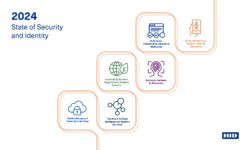FireEye: Organizations Are Spending More to Meet SOC Challenges
A study on the economics of security operations centers uncovers increasing management complexity and rising costs, plus anticipated spend on new technologies.

MILPITAS, Calif. — A newly released report by cybersecurity firm FireEye (Nasdaq: FEYE), in association with Ponemon Institute, finds that even though organizations are spending more to account for widespread security operation center (SOC) challenges, they remain dissatisfied with the outcomes.
These challenges include growing security management complexity, increasing analyst salaries, security engineering and management outsourcing costs. However, companies are also boosting investments in new SOC tools like Extended Detection and Response (XDR) and security automation to help solve these issues.
“The findings of the Ponemon Economics of the SOC report show that organizations are facing an onslaught of rising security operations costs, but despite these increased investments, are still unhappy with their ability to combat growing cyberthreats,” says Christopher Triolo, vice president of customer success, FireEye. “Many security teams are now seeking new technologies that can provide greater efficiencies and visibility, while cutting alert overloads and eliminating mundane tasks to improve analyst morale.”
Following are key highlights from the report, titled “Second Annual Study on the Economics of Security Operations Centers: What Is the True Cost for Effective Results?”
Perceived ROI of the SOC Drops, While Costs Rise
The ROI of SOC investments have been worsening, due to increasing complexity and rising security engineering and management outsourcing costs.
- Perceived ROI of the SOC is dropping due to management complexity: More than half (51%) of respondents say the ROI of the SOC is getting worse, compared to 44% in 2019. More than 80% rate their SOC’s complexity as very high, rising from 71% in 2019.
- Rising outsourcing costs lessen appeal: The cost to pay MSSPs for security monitoring also increased and may impact ROI. The average cost is $5,307,250 annually, an increase from $4,441,500 in 2019 (i.e., 20% year over year).
- High security engineering costs aren’t resolving needs: Organizations are spending an average of $2,716,514 per year on security engineering. However, only 51% of respondents rate their security engineering efforts as effective or very effective.
SOC Workers Unhappy, Despite Increasing Salaries
Even with increasing salaries, organizations are not able to boost employee morale.
Security analyst morale impacted by long hours and demanding work: 85% say working in the SOC is painful or very painful, with this sentiment growing from 72% in 2019. Increasing workloads and being on call are overwhelming security analysts, with 75% saying that these factors cause burnout, rising from 70% in 2019.
SOCs can’t meet the rate of security analyst turnover: Despite expecting to hire an average of five analysts in 2021, three will resign or be fired in one year. Organizations are increasing security analyst salaries, with the average rising from $102,000 to $111,000 in 2020. However, only 38% still believe they can hire the right talent.
New Technology Investments Show Promise
However, increasing investments in new XDR and security automation tools show promise to reduce security engineering costs, boost SOC performance and employee morale.
- XDR and security automation budgets are increasing: Organizations are investing in XDR as an emerging category to improve SOC performance. Organizations are spending an average of $333,150 for XDR; $345,150 for SOAR; $285,150 for MDR; and $183,150 for SIEMs.
The SOC Is Key for Maintaining Security Posture
Despite current ROI perception, respondents noted that the SOC is more important than ever to having a strong security posture.
- The SOC is essential: The number of respondents who said their SOC is essential increased substantially from 73% last year to 84% now. Meanwhile, the most important SOC activities are: Minimizing false positives reporting (88%); Having agile DevOps functions (increasing from 75% to 85%); and automating machine learning tools (increasing from 72% to 80%).
The Ponemon Institute surveyed 682 SOC managers, security analysts, general security practitioners, IT managers and directors who have a SOC and are knowledgeable about cybersecurity practices in their organizations. To download the full report, go here.
If you enjoyed this article and want to receive more valuable industry content like this, click here to sign up for our FREE digital newsletters!

Security Is Our Business, Too
For professionals who recommend, buy and install all types of electronic security equipment, a free subscription to Commercial Integrator + Security Sales & Integration is like having a consultant on call. You’ll find an ideal balance of technology and business coverage, with installation tips and techniques for products and updates on how to add to your bottom line.
A FREE subscription to the top resource for security and integration industry will prove to be invaluable.













